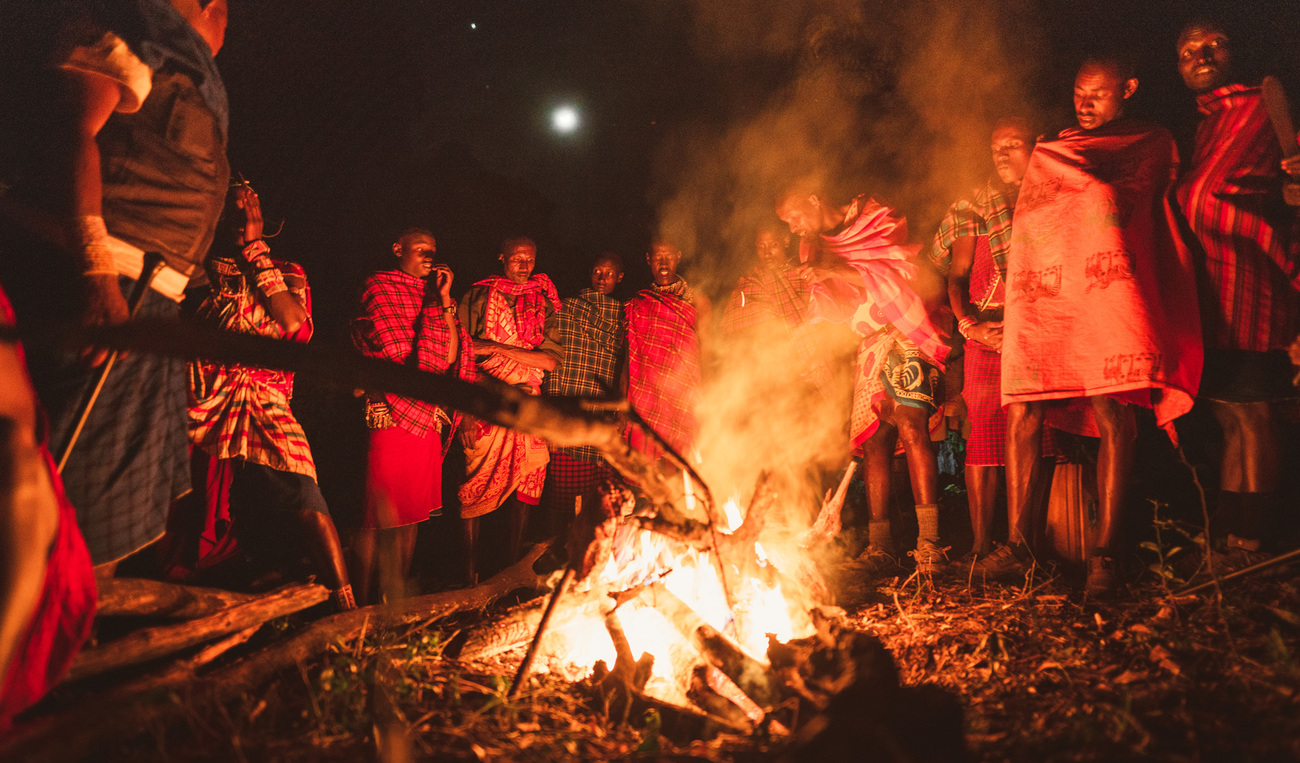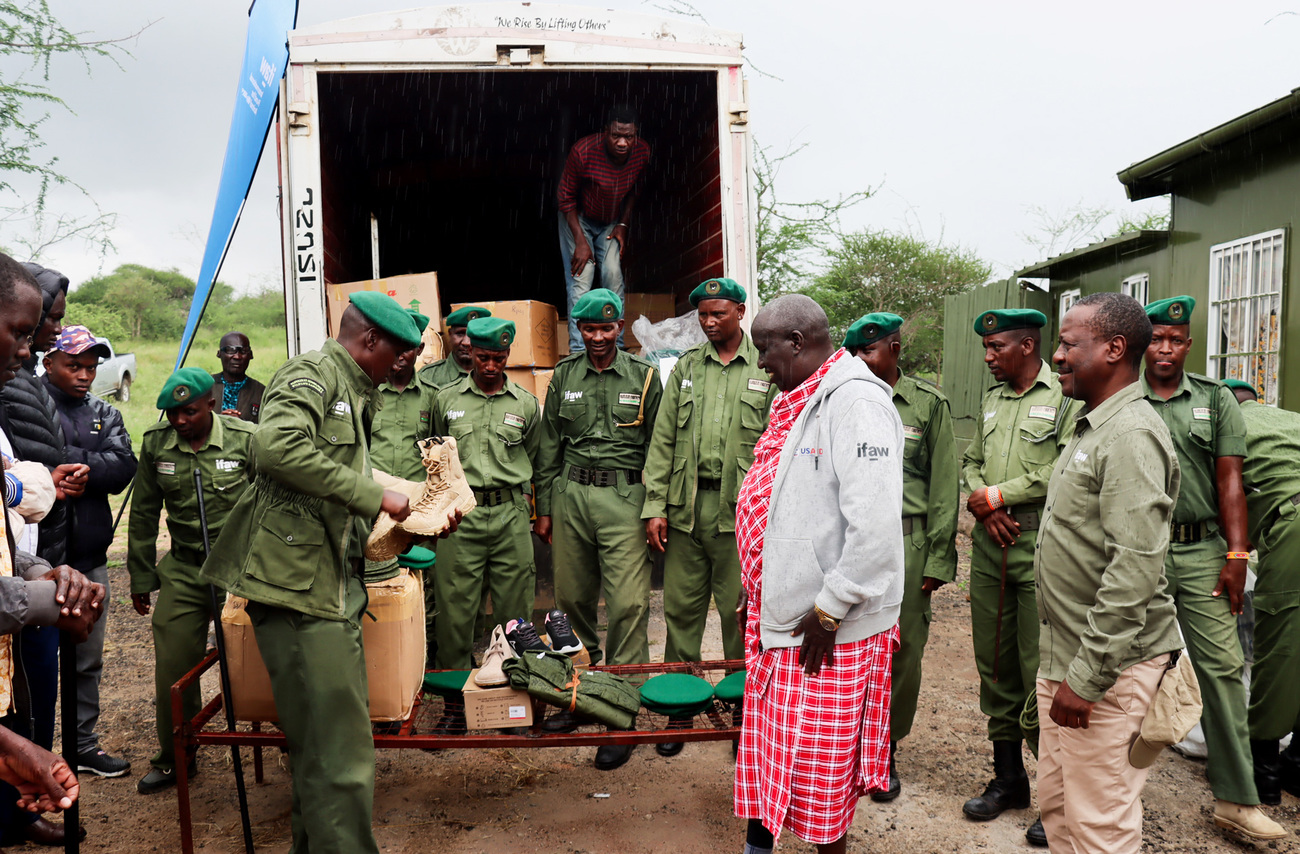Land subdivision threatens the survival of critical Maasai community forest in Kenya
Land subdivision threatens the survival of critical Maasai community forest in Kenya

The 330 square kilometres of dry upland forest located approximately 50 kilometres east of the Maasai Mara National Park in Kenya are rich in biodiversity. The forest hosts more than 50 mammal species, including an estimated 430 elephants, and a rich bird life, among them the critically endangered Taita apalis, the endangered Taita thrush, and the vulnerable Taita white-eye. Loita also has a large variety of plants and high-value tree species, six of which are locally threatened.
In addition, the forest is a critical water source, its swamps breathing life into the Olasur, Sand (Olng'ainet), Kanunka, and Ol Keju Arus rivers. These four rivers sustain the community and drain into Lake Natron in Tanzania and the Maasai Mara, Lake Magadi, and Naroosure/Enkutoto group ranch in Kenya, where they support livestock and wildlife in a water-deficient transboundary landscape.
The forest is a critical resource for the Loita community. Through a system managed by 36 elders led by a spiritual leader, the Laibon, the Maasai sustainably harvest food, firewood, medicinal plants, building poles, veterinary and fodder plants, and wood products such as dyes, fire sticks, and arrow poisons. In addition, the community depends on the forest for water, grazing (during the dry season), and beekeeping.
Loita's cultural significance has, however, protected it the most. The forest is used for important cultural ceremonies, and its sacred status makes its destruction taboo. As a result, the forest remained in good condition for centuries, with tall trees, a closed canopy, and high regeneration.
Eroding a forest erodes a culture
Nonetheless, according to one study, the size and quality of the forest have been declining since 1990 due to increasing human settlements, farming, construction of cattle kraals, and timber harvesting.
The study warns that the community leadership might not cope with the pressure to overexploit forest resources—and that the desire of pastoralists to retain their land and conserve their environment is waning. For instance, whereas there was only one household at Esere Empupurtia—the largest swamp in the forest—in 2007, the number of households around the swamp has now risen to more than 80, and the swamp is being drained for farming and human settlement.
The cracks, however, began to appear much earlier. In 1992, the government of Kenya issued a legal notice to convert the community forest into a forest reserve under the protection of the Kenya Forest Service, the state agency responsible for forest management.

The government feared that a decline in the traditional management system would expose the forest land to subdivision and encroachment without state protection. The community, however, sued the government and won, arguing that turning Loita into a government forest reserve would restrict their access and erode Maasai culture.
In 2016, Kenya's Land Act was amended to give communities legal ownership of forest lands and enjoy rights to access, use, and manage forest resources. Unfortunately, a clause allowing the conversion of registered community land to private land subject to majority consensus may have unwittingly placed the future of this forest in grave jeopardy.
Fragmenting the land
When the community gathered to deliberate the future of the forest, elders recommended that it be registered as community land. They feared that subdivision would introduce non-members into the forest and dilute the traditional institutions, cultures, and practices that have been conserved since time immemorial.
However, the majority wanted individual parcels that could be used as collateral for bank loans or bequeathed to children as inheritance and farmed without hindrance from elders.
‘After the subdivision, some started selling their 11-acre pieces to non-members for as little as Ksh 1 million (US$7,730),’ says Evan Mkala, programme manager at IFAW East Africa. ’The buyers cut down trees for timber, erect fences, and use bushfires to clear the land for farming.’
Alas, the elders were right.
In a 2024 CNN interview, 85-year-old Loita community elder Oltukai Ole Koikai said, ‘If you own the land, you can do whatever you want to do: you can sell it, you can give it to a different person outside the community…They don’t know our culture, they don’t know the forest, all they know is maize and beans.’
As a result, the forest is losing biodiversity at an alarming rate, with the fences only worsening an already precarious situation. They impede animal movement in a habitat that provides connectivity for wildlife from Amboseli to the Maasai Mara and Serengeti ecosystems and back.
Empowering a community to preserve their natural heritage
The destruction of Loita Forest will not just affect wildlife. In the long term, it will severely erode ecological balance in the landscape, increase human-elephant conflicts, and weaken the livelihoods of more than 25,000 local Maasai people, who depend on it for sustenance and ecosystem services.
IFAW has worked in Loita Forest since 2018 through the Ilkimpa Community Conservation Association (ICCA).
‘Our 24 community game scouts—supported by IFAW—conduct foot patrols to monitor animal migrations, illegal human activity and human-wildlife conflict. We also involve women in forest protection through a photography project providing critical animal movement data,’ says ICCA director Crescentia Senteu.

Despite sub-division, the forest can still be safeguarded well into the future by empowering and enabling the community to protect the forest and its inhabitants as an ecological and cultural entity, as they have always done.
‘Awareness and the knowledge and skills to implement socio-economic activities that put money in their pockets would be a decisive disincentive against selling their land,’ Evan says. ‘Charging ecosystem services accruing from this forest would also encourage the Loita community to fiercely protect this resource.’
Related content
Our work can’t get done without you. Please give what you can to help animals thrive.